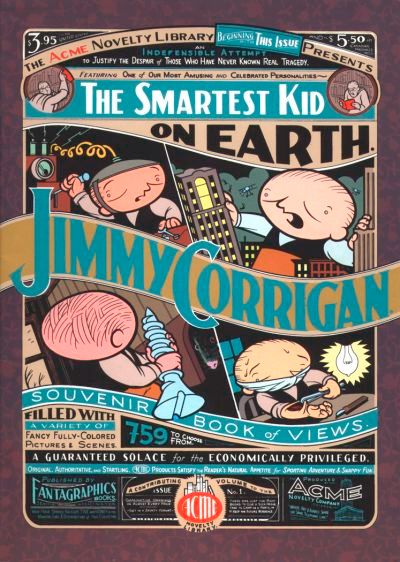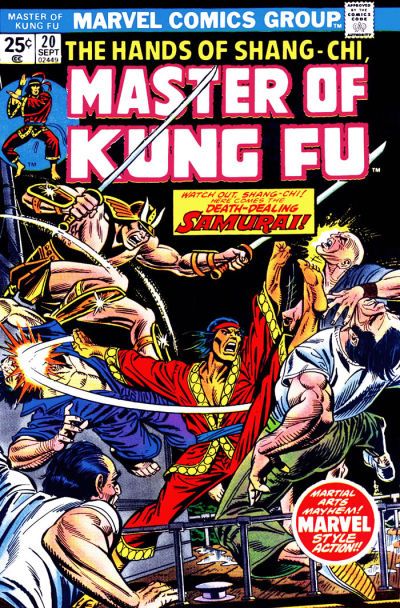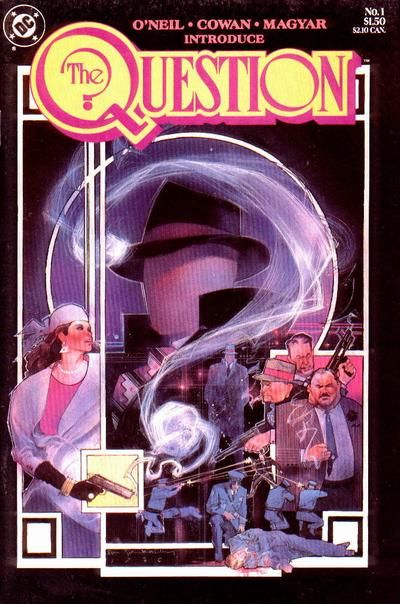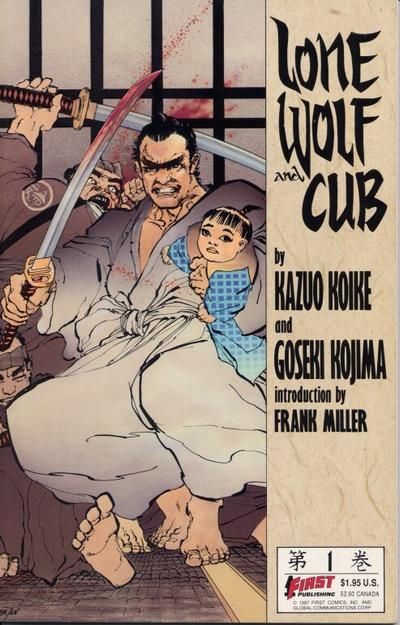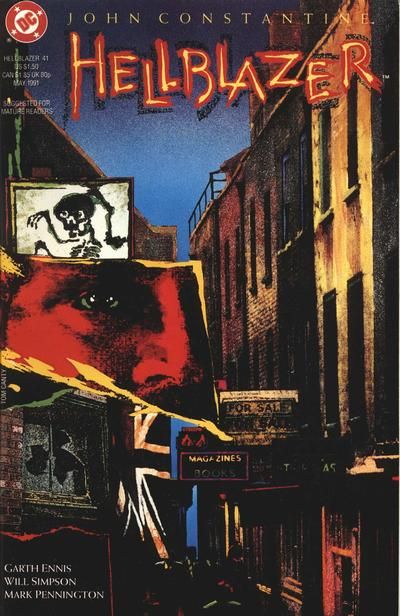The countdown begins....NOW!
There were a lot of books bundled together at the bottom of the list (with a three-way tie for 100th!!!), and heck, all throughout the list the votes were close, as this vote was much more diversified than the characters list, where the top characters totally dominated (with Batman getting about twice as many votes as the #2 vote-getter), so here a single vote might very well determine a run's placing!
With such closeness, it was really good to get so many votes. 682 votes cast is amazing! I completely underestimated how many votes that was. I thought it was only slightly up over the Characters poll, but it was actually over a HUNDRED ballots more than the Characters list!!! That's incredible, folks!!! Thanks so much!!
I'll be doing two five-run groups per day, but for this first day, I'm doing ten at once!!
Enjoy!
100 (tie). Chris Ware's Acme Novelty Library - 95 points (2 first place votes)
Acme Novelty Library #1-current (#18)
One of the most innovative voices in comics, Chris Ware's Acme Novelty Library is the ongoing series where Ware serializes his stories before collecting them into individual books. This is where Ware's highly acclaimed novel, Jimmy Corrigan: The Smartest Kid on Earth, was original published.
Currently, Ware is working on Rusty Brown, yet another breathtakingly nihilistic piece by one of comic's modern masters.
Each issue of the book is done in different ways, from a standard looking book to over-sized poster book, all based on Ware's feeling for that issue. The series began in 1995. It is up to issue #18.
100 (tie). Doug Moench's Master of Kung Fu - 95 points
(The Hands of) Shang-Chi: Master of Kung Fu 20-63, 65-120, 122, Annual #1
Amidst the booming martial arts crazy, Shang Chi was introduced, created by Steve Englehart and Jim Starlin.
Doug Moench took over the writing chores of the comic with issue #20, and two issues later, the artist most voters were thinking of when they cast their vote for this run, Paul Gulacy, joined him.
The pair combined for an impressive two year run, where Moench's action-based plots flowed well with Gulacy's character-infused artwork (Gulacy was known for basing pretty much every character on movie stars).
After Gulacy left and Jim Craig had a short run, the book become popular again, courtesy of new penciler, Mike Zeck.
Zeck was also a wonderful action artist.
After Zeck left, though, the book entered perhaps its most impressive art phase, as long-time inker, Gene Day, took over the art chores of the book. Day had an amazing style of detailed character depictions mixed with fluent action drawings. He was a great artist.
Sadly, while the book was critically acclaimed, it did not sell that well during this period (as the martial arts craze had died down by then), and even sadder, Day passed away from a heart attack after issue #120.
The book soon ended with #122, with Moench working on the book for about 100 issues.
More recently, Moench and Gulacy reunited for a Master of Kung Fu mini-series.
100 (tie). Jack Cole's Plastic Man - 95 points (1 first place vote)
Police Comics #1-90, Plastic Man #1-26
Jack Cole was one of the most inventive artists of the Golden Age, and he really went hogwild with his creation, Plastic Man, within the pages of Police Comics and Plastic Man's own title.
Plastic Man could basically become anything - so that gave an artist as creative as Cole a lot of freedom to draw basically whatever HE wanted to draw, so he would use Plastic Man to tell all sorts of bizarre, slapstick-y stories that hold up surprisingly well to this day.
Cole left the book towards the end of the decade, then spent the 50s doing a number of different projects, most notably his work for Playboy. Sadly, Cole ended his own life in 1958.
99. Terry Moore's Strangers in Paradise - 96 points (2 first place votes)
Strangers in Paradise Vol. 1 #1-3 (Antarctic Press), Vol. 2 #1-13 (Image Comics/Abstract Studio), Vol. 3 #1-90 (Abstract Studio)
Who would have thought that Strangers in Paradise would have become such a huge hit when it first debuted a small, self-published three-issue mini-series in 1993?
Well, I did, actually, but that's neither here nor there. ;)
Strangers in Paradise is about two best friends, Francine and Katchoo, who are about as close as you can get - although Katchoo would like them to be even closer, wink wink nudge nudge.
That alone would cause enough dramatic tension for a series, but Moore also added newcomers David and Casey, who were part of this almost/sorta/kinda love quadrangle, while Moore introduced a number of other interesting supporting characters over the years who gained more prominence as the book went on.
Moore's greatest asset was his handling of emotional issues and character interactions. If he was not so good at it, the book would have collapsed under the weight of all the soap opera-esque love stories. Luckily, Moore grounded the work, so it felt real.
Moore's artwork was light, but expressive - and he even managed to handle action fairly well when the script called for it (which was not often, although there were a few notable stories with some action).
The series recently drew to a close last year, after over a hundred issues.
97 (tie). Matt Wagner's Grendel - 98 points (1 first place vote)
Comico Primer #2, Grendel: Devil by the Deed, Grendel #1-40 (Comico), Grendel: War Child #1-10, Grendel: Devil's Legacy #1-12, Grendel: God And The Devil #1-12, Grendel: Behold the Devil #1-current and a lot of Grendel Tales (Dark Horse)
Grendel began in 1982, with Matt Wagner's tale of Hunter Rose, the evil criminal mastermind, Grendel.
However, Grendel did not REALLY begin until 1986, when Wagner began the Grendel ongoing series, which was drawn by a number of different artists (starting with the Pander Brothers).
In this series, Wagner reveals that Grendel was not Rose, per se, instead, Grendel is a "spirit of aggression" that sort of possesses people, and in the ongoing series, Rose's granddaughter, Christine Spar, becomes Grendel.
It's a dark, brilliant work which examines exactly what it means to be "evil."
Wagner continued with other people becoming Grendel.
Recently, Wagner began work on a mini-series (drawn by Wagner) commemorating the 25th anniversary of Grendel, as he revisits Hunter Rose to reveal a secret. It has been awesome.
97 (tie). Stan Sakai's Usagi Yojimbo - 98 points (2 first place votes)
Usagi Yojimbo #1-38 (Fantagraphics), #1-16 (Mirage), #1-current (109) (Dark Horse)
There is this group of awards called the Ursa Awards that started awhile back. It is given to works that feature anthropomorphic characters. Usagi Yojimbo has won an award from it almost EVERY year.
That's not really all that impressive, I guess, but I thought it was cool enough to note!
Anyhow, Usagi Yojimbo is the brainchild of Stan Sakai, who uses his anthropomorphic bunny character to tell brilliant stories about Japan, specifically its history and its folklore.
The series is for all-ages, and it is one of the few works that is truly all ages, as everyone can appreciate Sakai's detailed artwork, and the stories are educational to readers from 8 to 88 (at 89, you stop liking Usagi Yojimbo, I am afraid).
There is a lot of action, but for the most part, the book is character-based. You easily become invested in the main character.
96. Denny O'Neil and Denys Cowan's The Question - 99 points (1 first place vote)
The Question #1-36, Annual #1-2
When DC purchased the Question from Charlton (where Steve Ditko had created the book decades earlier), the book was given to Denny O'Neil, who basically "owned" the Question for the next decade or so (more, even), as he was essentially the only writer of the Question during that time period. However, for most of that time, there was no Question series. From 1987 to 1990, though, there was, and it was by Denny O'Neil and Denys Cowan, and it was good.
In the series, O'Neil had the Question become a book that was more about Eastern philosophies than anything else (heck, there were even "recommended readings"!!), as the Question changed his methods and tried to deal with crime in his city, Hub City, by attacking the corruption at its source in the government.
O'Neil worked in a number of intriguing supporting characters, such as Myra, the mayor of Hub City, Lady Shiva and Richard Dragon.
Denys Cowan's art worked well with the almost surreal take by O'Neil. It was a brilliant comic book, and it is good to know that DC is finally collecting it into trades.
95. Kazuo Koike and Goseki Kojima's Lone Wolf & Cub - 100 points
Lone Wolf & Cub Vols. 1-28
Lone Wolf & Cub (or as it was originally known in Japan, Kozure ÅŒkami) is a straightforward tale.
Ogami IttÅ's wife and most of his family was murdered by the YagyÅ« clan so, along with his young son (the only survivor), Daigoro, he must gain his revenge upon the YagyÅ« clan, and its evil leader, YagyÅ« RetsudÅ. And along the way, hilarity ensues.
So with such a straightforward tale, for it to be so acclaimed, you know that the story and the art must be great, and it really is.
The late, great Goseki Kojima's artwork was an inspiration to many artists, with Frank Miller probably being the most notable (and think about it, if you inspired Frank Miller's style, think of all the artists who were then inspired by Miller...), and his depictions of the stark reality of violence is stunning.
Kazuo Koike's story is quite impressive, especially the way he shows how evil the circle of violence between the two clans, leading to the memorable conclusion to the series (which lasted six years, between 1970 and 1976).
93. Garth Ennis' Hellblazer - 101 points (1 first place vote)
Hellblazer #41-50, 52-83, plus two Specials
While most folks associate Garth Ennis' Hellblazer run with Steve Dillon, and rightfully so, as their work was memorable, Ennis actually began working on the series with Will Simpson, not Dillon. Dillon joined up later.
Hellblazer was Garth Ennis' breakthrough performance. He had big shoes to fill when he took over from Jamie Delano with #41, but by the time Eddie Campbell and Paul Jenkins followed up Ennis forty issues later, the big shoes to fill were certainly Ennis', as the series was marvelous.
Ennis was only meant to do a fill-in issue, but he impressed editor Stuart Moore that he soon became the full-time writer. Ennis' original idea was to make the book a bit lighter, at least compared to Delano's run. The book obviously is always going to be a dark comic, but Ennis added some black humor to the book that did not exists as much under Delano.
Ennis' first story was a classic, as it detailed John Constantine dying of lung cancer, and Constantine coming up with anything he could think of that might get him out of it. It's a landmark Hellblazer story.
Ennis' biggest success with his run was his characterizations of the various new cast members he introduced, primarily Kit Ryan, John's girlfriend, who would be popular enough that she received her own one-shot (the brilliant Heartland).
Ennis' stories were often bleak and brutal (as Preacher fans know), but they always were based in real human emotion, and that was a great anchor for the run.
93. Brian Michael Bendis and Michael Gaydos' Alias - 101 points (1 first place vote)
Alias #1-28
Jessica Jones might be Brian Michael Bendis' greatest creation, and Alias is certainly one of his strongest works.
The series was an "Adults Only" look at the Marvel universe through the eyes of private investigator, Jessica Jones, who was once a superhero until she was violated by the villain, The Purple Man.
The series is basically about Jessica's redemption as a character, as we see her climb out of the gutter that she begins the story in until by the end of the series, she's a functioning adult in a real-life relationship.
Bendis used this series (and its PG-13 rated followup, the Pulse) to take a look at the Marvel Universe from a different perspective than normal. Bendis has almost made this his stock and trade at Marvel, examining how a "real" person would react to certain situations. In other usages, it might not work, but in Alias, it worked well.
Michael Gaydos' series art matched the mood of the comic beautifully. It was dark and yet his characters never become too dark for you to relate to, and that is much to Gaydos' credit.
92. Warren Ellis and Stuart Immonen's Nextwave - 103 points (2 first place votes)
Nextwave #1-12
Nextwave is ostensibly about a group of lesser known superheroes who find out that this Nick Fury knock-off is going around the country collecting Unusual Weapons of Mass Destruction that the heroes have to get to before he does.
And hilarity ensues.
Oh, does hilarity ensues.
With amazing artwork by Stuart Immonen and hilarious plots and dialogue by Warren Ellis, Nextwave was like riding a crazy roller coaster that you never want to get off of, although ultimately, you must, because hilarious action comics like Nextwave are rarely commercial successes, and the series ended after just 12 issues.
But who knows? Nextwave may return someday!!
91. Mike Grell's Green Arrow - 104 points (3 first place votes)
Green Arrow: The Longbow Hunters #1-3, Green Arrow #1-80, Green Arrow Annual #1-4, 6
I just recently wrote about Mike Grell's Green Arrow, so it is neat to see it show up on the list.
What Grell did in the late 1980s was to take Green Arrow away from the world of superheroes, and remake him as a sort of urban vigilante. He still wore a costume, but it was more of an outfit than a costume. To wit, he did not really hide his face at all.
Grell viewed Oliver Queen as an older man, and less interested in the adventures he went on when he was younger and in the Justice League. He mostly wants to settle down with his girlfriend, Dinah Lance (Black Canary). However, after being captured and tortured by some bad guys early on, Dinah is unable to have children. Couple that with the fact that she is still in the stage of her life where she WANTS to have adventures, their relationship is troubled.
Grell was joined by artists as diverse as Ed Hannigan, Dan Jurgens and Denys Cowan (following the Question ending).
Grell also introduced two notable characters in his series - Shado, the beautiful and deadly Japanese archer and Eddie Fyers, a mercenary whose role was minor early on, but kept showing up like the proverbial bad penny.
Grell stayed on the book for 80 issues. And they were 80 of the best issues of Green Arrow will likely ever see.
That's the first ten!
Come back tomorrow for the next ten!!


